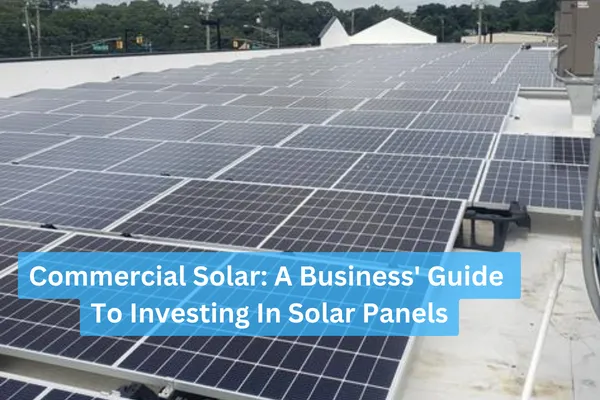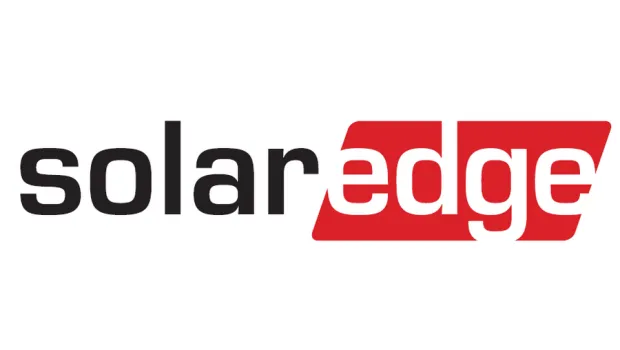
Commercial Solar : A Business' Guide To Investing In Solar Panels
If you're a business leader eager to take charge of fixed costs, reduce tax expenses, and increase your savings, you've landed in the right spot. Achieving these goals is precisely what you can accomplish through the adoption of commercial solar panels.
However, solar may not be suitable for everyone, and navigating the process of considering solar for your business can be overwhelming. That's why we've developed this guide for investing in commercial solar panels. Inside, you'll discover answers to key questions that will assist you in determining whether solar is a good fit for your business. If it is, the guide will pave the way for a successful solar investment.
Whether your business is a solo enterprise or a large corporation, this guide is designed to benefit you.
The Basics of Commercial Solar
How Does A Commercial Solar Panel System Work?
A commercial solar energy system is composed of strategically positioned solar panels on the rooftop or grounds of your commercial property. These solar panels consist of photovoltaic (PV) cells that transform sunlight into direct current (DC) electricity. The generated electricity then passes through a solar inverter, converting it into alternating current (AC) electricity required to fuel your business.
The electricity travels from the inverters to a distribution panel, which directs it to power your facility. If your system generates more electricity than your facility consumes, the excess is sent to the utility grid, and you receive compensation through net metering. Your electric meter monitors the flow of electricity to and from the utility grid.

What is Net Metering?
Net metering essentially provides a form of free energy storage through the utility grid, serving as a crucial billing mechanism for the payback of your system.
In times of excess electricity production from your solar panels, the surplus is sent to the utility grid. Credits are then granted for this surplus electricity, which can be utilized to offset the electricity drawn from the grid during periods when your panels aren't generating sufficient power to run your business.
Commercial Solar Pricing & Payback
How Much Does Commercial Solar Panels Cost?
Solar solutions are not universally applicable, making it challenging to determine an exact cost for a commercial solar system without specific information such as your electricity consumption, installation location, and other essential data points. Your solar system will be tailor-designed to align with your unique needs, objectives, and budget.
Here are some site-specific factors that will determine the system's cost:
The Installation Type - Roof, or Ground
The Type of solar panels, inverters, and other equipment
Your energy consumption
Your Local Weather and shading
Utility Connection Cost
The Distance from the solar to the interconnection point
The chart below offers a rough estimate by categorizing projected installation costs based on average monthly electric bill amounts.

As you can see in each of the examples, the incentive and tax savings are more than the cost of the solar system... putting cash into your pocket. We will explain each of these incentive below.
How Does the Commercial Solar Tax Credit Work?
The tax credit for commercial solar is a remarkable incentive for businesses to capitalize on solar investments. For starters, there's a tax credit for buying any solar panels, totaling 30% of the system's cost. Also if the solar panels are manufactured in the US, the government will provide an additional 10% tax credit.
How Does Commercial Solar Deprecation Work?
Businesses have the opportunity to leverage accelerated depreciation for their solar investments. In the first year, 60% of the cost basis can be depreciated on federal taxes, while the remaining 40% follows the five-year MACRS schedule. State depreciation also adheres to the five-year MACRS schedule.
What Other Incentives Are Available For Commercial Solar?
In addition to the tax savings, there are three primary advantages: the USDA REAP grant, the NJEDA Small Business Improvement Grant, and Solar Renewable Energy Credits (SRECs). Some states and utility companies also offer extra incentives for solar investments.
The USDA REAP grant is an excellent chance for qualifying rural businesses and farmers. This competitive grant has the potential to cover up to 50% of your installation cost, with a maximum funding amount of $1 million.
The NJ Economic Development Authority (NJEDA) Small Business Improvement Grant provides reimbursement for costs associated with making building improvements or purchasing equipment. Reimbursement of up to 50% of total project costs incurred up to $50,000. Only one award is allowed per EIN for the life of the program.
Solar Renewable Energy Credits (SRECs) present an additional opportunity to generate income from your solar system. Each 1,000 kWh of energy produced by your system earns you one credit, which can be sold. The SREC market is influenced by supply and demand, leading to fluctuating credit prices. It's important to note that SRECs may not be available in all states.







For nearly a decade, we've been delivering top-notch solar and electrical solutions to residences and businesses, regardless of their scale or type. Our family-operated enterprise prioritizes economical solar setup and upkeep, offering a refreshing alternative to the expensive, sales-centric methods commonly seen in New Jersey's solar energy industry.
Call 609-337-4117
Email: info@cleanenergyadvisor4u.com
Site: www.cea4u.solar
